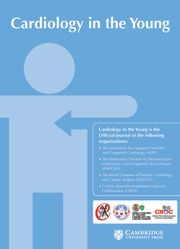No CrossRef data available.
Article contents
The potential use of game theory in decision-making in CHD
Published online by Cambridge University Press: 10 October 2024
Abstract
Background: Congenital cardiac care involves multiple stakeholders including patients and their families, surgeons, cardiologists, anaesthetists, the wider multidisciplinary team, healthcare providers, and manufacturers, all of whom are involved in the decision-making process to some degree. Game theory utilises human behaviour to address the dynamics involved in a decision and what the best payoff is depending on the decision of other players. Aim: By presenting these interactions as a strategic game, this paper aims to provide a descriptive analysis on the utility and effectiveness of game theory in optimising decision-making in congenital cardiac care. Methodology: The comprehensive literature was searched to identify papers on game theory, and its application within surgery. Results: The analysis demonstrated that by utilising game theories, decision-making can be more aligned with patient-centric approaches, potentially improving clinical outcomes. Conclusion: Game theory is a useful tool for improving decision-making and may pave the way for more efficient and improved patient-centric approaches.
- Type
- Review
- Information
- Copyright
- © The Author(s), 2024. Published by Cambridge University Press



